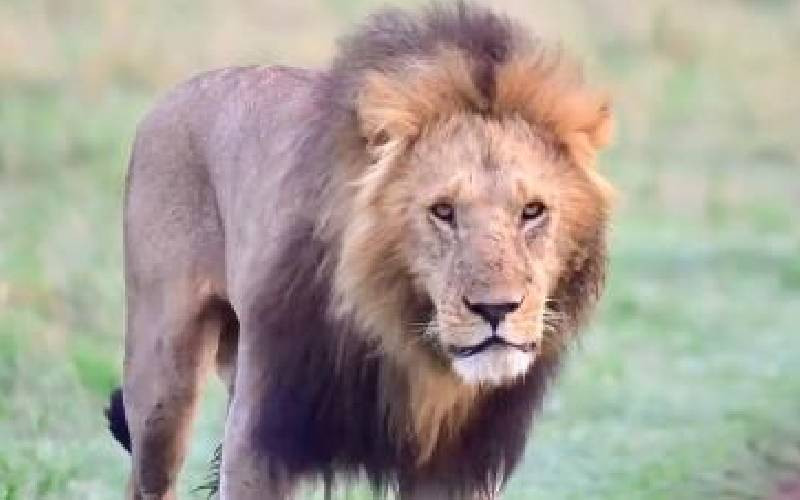By Harold Ayodo
Scientists are at their wits end trying to save the hippo as drought ravages Tsavo West National Park, killing the mammal in droves.
In the last four months alone, 80 hippos have died of starvation at the park.
According to the Kenya Wildlife Service (KWS) 25 hippos died in July and August forcing the organisation to launch a feeding programme in a bid to prevent the mammal from joining the list of endangered animal. The park spent Sh1.2 million to buy and transport hay from Naivasha in August for feeding the animals.
Tsavo West National Park Deputy Park Warden Christine Boit says a bale of hay costs Sh400 yet the progamme was not budgeted for. "We are using funds from a supplementary budget that will soon run out," she says.
Endangered wildlife
If the funds run out the hippo may join the list of endangered wildlife in Tsavo that includes the elephant, black rhino, antelope, gravy zebras, gazelle and African wild dog.
Carcasses of hippos strewn across the park’s landscape paint a stark picture of a dire situation.
 |
Hippos rely on hay from Kenya Wildlife Service. [PHOTOS: MARTIN MUKANGU and KWS] |
Stench from decomposing carcasses is a warning to visitors of what to expect.
Lethargic animals scavenging for food are obvious signs of the looming disaster.
Other animals like the warthog, buffalo and rhino are also affected but not as severely as the hippo which is an easy prey because it relies on specific feeding areas and does not seek alternatives in times of scarcity.
During a tour of the park we (the writer and photographer) found rotting hippo carcasses floating on the surface of Mzima Springs, crocodiles having feasted on them to their fill.
Stay informed. Subscribe to our newsletter
KWS is so concerned about the threat that it is contemplating a survey on the hippo, something that has not been done before because the animal has never faced any great threat to their survival before.
Boit says they were surprised when they bumped into the carcasses a few months ago. "Suspecting that they were dying from a disease outbreak we immediately engaged our researchers," Boit says. Post mortem examinations on most of the bodies found starvation was the cause of death.
KWS projections show that the climatic conditions could lead to a replication of wildife deaths like the ones experienced over 30 years ago.
Nearly 300 black rhinos died of starvation between 1960 and 1961. Another drought ten years later killed 6,000 elephants. Nearly 3,000 elephants died during the dry spell between 1972 and 1975.
But a few predators are having a ball as they do not have to put up a chase to capture their weak prey.
Starved and thirsty wild animals now rely on water points at the few lodges in the expansive game park .
To outwit predators such as lions many animals including the hippo have reversed their feeding times from night to day.
KWS researchers attribute the severe dry periods to global warming impacting negatively on the flora and fauna. Senior Research Scientist and Veterinary Officer David Ndeereh says the only way to save the hippo is by providing them with feed. "Hippos feed on hay," Dr Ndeereh says.
But the hippo has to contend with competition from other frail wildlife. "We realised animals like warthogs, buffaloes, impalas and waterbucks are scrambling for the little hay we provide," he says. "It is survival for the fittest," Ndeereh says.
Run out of fruits
The situation is the same at neighbouring Tsavo East National Park where baboons are feeding on cactus having run out of fruits.
Tsavo East National Park research scientist Elphas Bitok says researchers are also concerned about the emergence of invasive drought plant species which are replacing indigenous plants because the animals find them unpalatable," Bitok says.
Tsavo West National Park research scientist John Kariuki says they are monitoring the behaviour of the fed hippos. "They use lesser energy to find food than earlier when they walked to the grazing fields," Kariuki says.
The Tsavo climate is characterised by alternating dry and rainy seasons – the long dry period from June to October and short rains in November to December. The game reserve also experiences a short dry season from January to March and long rains in April/May. The climate, however, is often modified by out of season rains or dry spells, as is the case this year.
Extreme fluctuations
Environmental conditions in Tsavo West are harsher and undergo extreme fluctuations with probability of drought every 10 – 15 years. Tsavo West National Park tourism officer Joseph Gichohi says the drought could affect tourism as some wild animals are leaving the park in search of pasture.
 The Standard Group Plc is a
multi-media organization with investments in media platforms spanning newspaper
print operations, television, radio broadcasting, digital and online services. The
Standard Group is recognized as a leading multi-media house in Kenya with a key
influence in matters of national and international interest.
The Standard Group Plc is a
multi-media organization with investments in media platforms spanning newspaper
print operations, television, radio broadcasting, digital and online services. The
Standard Group is recognized as a leading multi-media house in Kenya with a key
influence in matters of national and international interest.
 The Standard Group Plc is a
multi-media organization with investments in media platforms spanning newspaper
print operations, television, radio broadcasting, digital and online services. The
Standard Group is recognized as a leading multi-media house in Kenya with a key
influence in matters of national and international interest.
The Standard Group Plc is a
multi-media organization with investments in media platforms spanning newspaper
print operations, television, radio broadcasting, digital and online services. The
Standard Group is recognized as a leading multi-media house in Kenya with a key
influence in matters of national and international interest.









